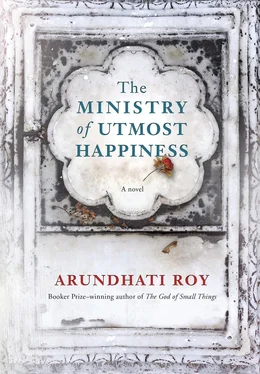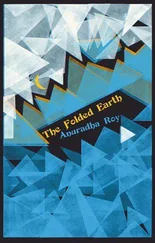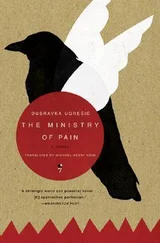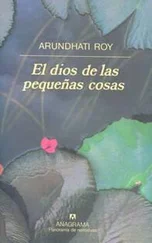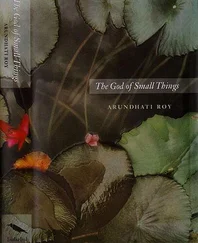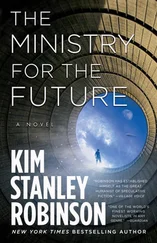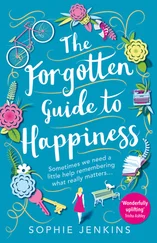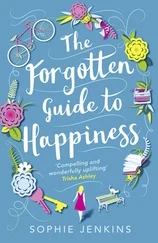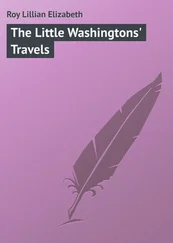On the wall just above the computer there are two smallish, framed photographs. One is a picture of a child, maybe four or five years old. Her eyes are closed and her body is wrapped in a shroud. Blood from a wound on her temple has seeped through the white cloth, a rose-shaped stain. She’s laid out on the snow. A pair of hands pillows her head, lifting it slightly. Along the top edge of the photograph is a row of feet, clad in all manner of winter shoes. It occurs to me that the child could be Musa’s daughter. What an odd photograph to choose to frame and hang on your wall.
The other photograph is less distressing. It’s been taken on the porch of a houseboat. One of the smaller, shabbier ones. You can see the lake dotted with a few shikaras in the background and the mountains beyond. It’s a picture of an unusually short, bearded young man in a worn, brown Kashmiri pheran. His big head is disproportionate to the size of the rest of his body. He has a bunch of tiny wild flowers tucked behind each ear. He’s laughing, his green eyes sparkle and his teeth are crooked. Something about the unguardedness, the sheer abandon of his smile, makes him look like a child. Crouching in the bowl of his large hands are two tiny kittens, one has a smoky gray coat streaked with black, and the other is a harlequin, with a black eyepatch. He’s holding them out, as though he’s offering them to the photographer to touch or stroke. The kittens are peering over the barricade of his thick fingers, their liquid eyes alert and apprehensive.
Who could he be? I have no idea.
I pick up a fat green file from a pile of files on the table and open it at a random page. Two photographs are glued on to a sheet of paper. In the first one, a blurred, out-of-focus cyclist rides past a barred metal doorway set in a six- or seven-foot-high pink boundary wall, the entrance to what looks like a public men’s toilet. It is located in a crowded neighborhood and is surrounded by one- and two-storeyed brick buildings with balconies. There’s an advertisement for “Roxy Photocopier” painted directly on to the wall in large green letters. The second photograph has been taken inside the toilet. The weathered pink walls are streaked with moss and moisture and have rusty pipes running along them, horizontally as well as vertically. There is a grimy white sink on the wall, and a row of three uncovered manholes in the concrete floor. Metal covers with handles, like the lids of enormous saucepans, lie next to them. An old, broken window frame and a plank of wood are propped up on one wall. They are the most unexceptional photographs I have ever seen. Who has taken them? Why would anybody take pictures like that? And why would anybody file them away so carefully?
The next page explains it:
GHAFOOR’S STORY
This place is called Nawab Bazaar. See that public toilet? Where it says Roxy Photocopier? That’s where it happened. It was 2004. Must have been April. It was cold and raining heavily. We were sitting in my friend’s shop, New Electronics, right next to Rafiq Tailor Shop, drinking tea. Tariq and me. It was around eight at night. Suddenly we heard the screech of brakes. Across the road about four or five vehicles drove up and cordoned off the toilet. They were STF vehicles. STF, you know, is Special Task Force. Eight soldiers came to the shop and forced us to cross the street with them at gunpoint. When we reached the toilet they told us to go in and search it. They said an Afghan terrorist had escaped and had run into the toilet. They wanted us to go in and ask him to surrender. We didn’t want to go in because we thought that the mujahid would have a gun. The STF men put pistols to our heads. We went in. It was absolutely dark. We could see nothing. There was no person there. We came out and told them that there was nobody there. They asked us to go back in. They gave us a torch. We had never seen such a huge torch. One of them showed us how it works, switching it on and off on and off on and off. Another kept staring at us, clicking the safety catch of his gun on and off on and off on and off. They sent us back into the toilet with the torch. We flashed it around but found nobody. We called out, but nobody replied. We were completely drenched.
The STF soldiers had taken position in the next-door building. Two were on the first-floor balcony. They said they could see someone in the drain. How could that be? It was so dark, how could they see anything from so far away? I shone the torch down on the row of three manholes. I saw a man’s head. I was so afraid. I thought he had a gun, I moved away to one side. The soldiers asked me to ask him to come out. Tariq, who was standing behind me, whispered, “They’re making a film. Do what they say.” By “film” he did not mean really a “film” in that sense. He meant they were setting up the scene, to make a story.
I asked the man in the manhole to come out. He didn’t reply. I could tell he was a Kashmiri. Not an Afghan. He just stared back. He couldn’t speak. We stood around the man with the STF torch. It was still raining. The smell from the manhole was unbearable. Maybe an hour and a half went by. We did not dare to speak to each other. We switched the torch on and off. Then the man’s head fell sideways. He had died. Buried in shit.
The STF men gave us crowbars and spades. We had to break the concrete edges around the manhole to pull him out. All of us were wet, shivering, stinking. When we pulled out the body we found that his legs were tied together and weighted down with a rock.
Only later we learned what had happened earlier in the STF film.
First a few of them had come quietly in one car. They tied up the man and stuffed him into the manhole. He had been badly tortured and was about to die. When they came in they found another young man in one of the booths. They arrested him and took him away — maybe he refused to do what we agreed to do. Then they came back in their vehicles and staged the rest of the film in which there were roles for us too.
Their officer asked us to sign a paper. If we hadn’t signed they would have killed us. We signed as witnesses to an encounter in which the STF had tracked down and killed a dreaded Afghan terrorist who was cornered in a public toilet in Nawab Bazaar. It was in the news.
The man they killed was a laborer from Bandipora. The young man they arrested because he was pissing at a weird and inconvenient hour has disappeared.
And Tariq and I have lies and treachery on our conscience.
Those eyes that stared at us for one and a half hours — they were forgiving eyes, understanding eyes. We Kashmiris do not need to speak to each other any more in order to understand each other.
We do terrible things to each other, we wound and betray and kill each other, but we understand each other.

BAD STORY. Terrible actually. If it’s true, that is. How does one verify these things? People aren’t reliable. They’re forever exaggerating. Kashmiris especially. And then they begin to believe in their own exaggeration as if it’s God’s truth. I can’t imagine what Madam Tilottama is doing, collecting this pointless stuff. She should stick to her shampoo labels. Anyway, it isn’t a one-way street. The other side has its repertory of horror too. Some of those militants were maniacs. If one has to choose, then give me a Hindu fundamentalist any day over a Muslim one. It’s true we did — we do — some terrible things in Kashmir, but…I mean what the Pakistan Army did in East Pakistan — now that was a clear case of genocide. Open and shut. When the Indian Army liberated Bangladesh, the good old Kashmiris called it — still call it — the “ Fall of Dhaka.” They aren’t very good at other people’s pain. But then, who is? The Baloch, who are being buggered by Pakistan, don’t care about Kashmiris. The Bangladeshis whom we liberated are hunting down Hindus. The good old communists call Stalin’s Gulag a “necessary part of revolution.” The Americans are currently lecturing the Vietnamese about human rights. What we have on our hands is a species problem. None of us is exempt. And then there’s that other business that’s become pretty big these days. People — communities, castes, races and even countries — carry their tragic histories and their misfortunes around like trophies, or like stock, to be bought and sold on the open market. Unfortunately, speaking for myself, on that count I have no stock to trade, I’m a tragedy-less man. The upper-caste, upper-class oppressor from every angle.
Читать дальше
